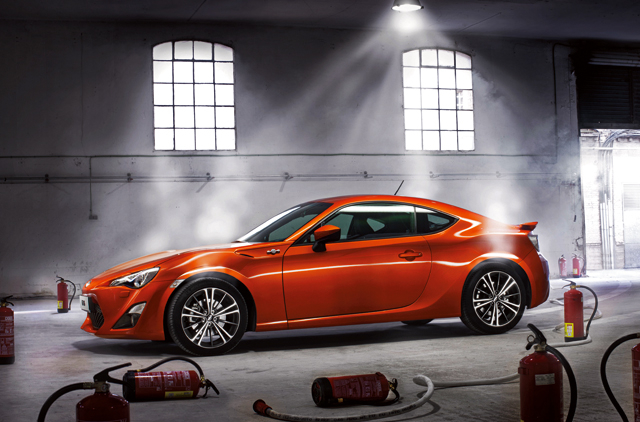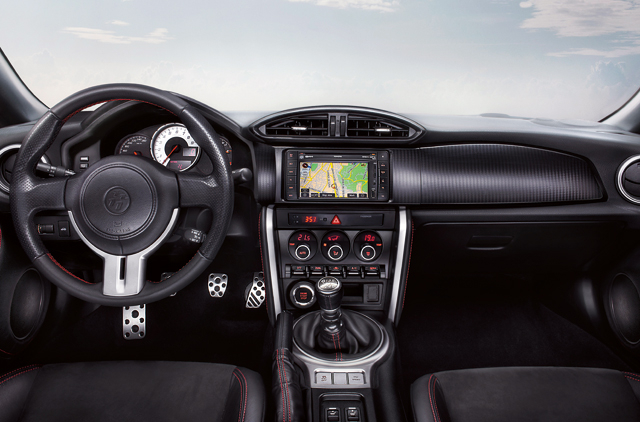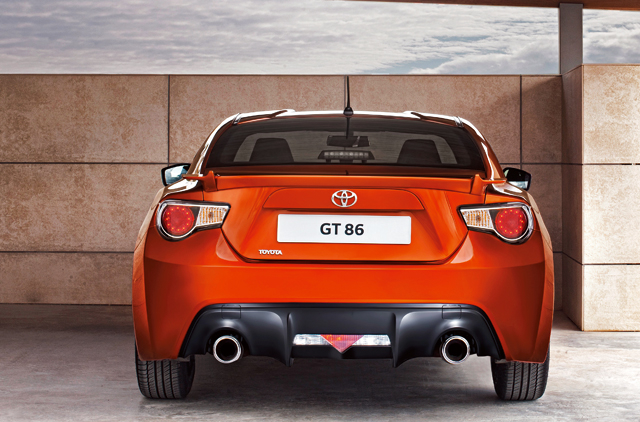
Over the last couple of years, Toyota's next sportscar concept turned out to be a bigger tease than Sharon Stone in Basic Instinct. It was obviously fun to watch, but after a while you just can't take any more.
That moment gripped us sometime after Frankfurt, and every day since we've been itching for a proper look at a production-ready Toyota FT-86. Well, here it is, finally, and it's now called the GT 86. No idea why the name change, but as you can see the important bit is that Toyota didn't feel it necessary to amend the concept look too much.
The GT 86 still looks as promised, minus the smaller wheels (as expected, standard rims are 16in, and you can spec 17s as an option), the long-gone-out-of-fashion ‘Lexus' lights, and some general toning down of the width and stance proportions.
The GT 86 still looks great for a Toyota product, with very strongly emphasised shoulders front and back, especially the rear wing, which kinks up into the base of the spoiler. Viewed dead-on the car seems a bit too tall on its stock suspension and skinny tyres, but that's what the aftermarket is for, and Toyota openly welcomes the tuning world's take on the GT 86, just like they did on the original AE 86.
As for the technical bits, the GT 86 promises driver-focused dynamics with a low centre of gravity, a 197bhp 2.0-litre boxer four mated to a six-speed manual or automatic gearbox, and perfected aerodynamics.
Toyota claims the GT 86 will exhibit precise, instant response to the smallest throttle and steering inputs, and that's exactly what we were hoping for, rather than outright power. And with a dry weight of just over 1.2 tonnes, our wish will most likely be realised.
Peak power comes in at 7,000rpm, so there's already an excuse to keep the rev needle vertical, and maximum torque of 205Nm is available at 6,600rpm. Since it's a flat engine it's been set low in the engine bay, and the driving position is as low as possible too, all in the name of superior handling — the centre of gravity is 475mm up. Weight distribution is 53:47 front to rear.
Toyota also kept its game on the inside, with a sporty interior highlighted by a thick, small-diameter steering wheel. There's lots of aluminium trim and a big white-faced rev-counter in the middle of the instrument binnacle for the driver to focus on what's important. A sat-nav (no doubt a cost option) display sits on top of the centre console and just about the only thing missing is a cluster of some performance gauges — no turbo, no boost gauge, though. Just as well…
Toyota hasn't disclosed any performance specifications yet, but considering the power to weight ratio the GT 86 should easily do 0-100kph in the sixes. For around $30,000 (Dh110,000), we can live with being out-diced by Nissan 370Zs.
Hachi who?
Why so much commotion from the enthusiast world about the GT 86? Well, it's mainly the last two digits in the nameplate, 86. In Japanese 86 is pronounced Hachi-roku, which was also the name of a legendary little sportscar Toyota used to produce in the Eighties. The new ‘reincarnation' isn't really meant to be that, or claimed to be that, but it doesn't matter. The philosophy is the same: a compact, rear-drive chassis, with a highly-tuneable engine just like the original 4AGE four-pot.
Toyota wants to offer a low base price for a car with minimal computers, so that the common enthusiast can relive his AE 86 days with the new GT 86, tuning and extracting the maximum potential from the new car. Toyota engineers went as far as attending countless enthusiast meets in Japan to find out what makes them tick, and ensure the GT 86 offers those same loveable charms of the AE 86.
The old car may have been out of production for over two decades, but it's still making noise in grassroots drift and grip events everywhere, even making appearances in the D1 drift series competing with 500bhp rivals. It's stood the test of time specifically for how well it lends itself to tuning, and Toyota wants the GT 86 to be the same. A 500bhp Hachi-roku? Soon to be a reality, and no engine swaps necessary either.














